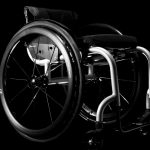Although there are many different types of paralysis, these can be broadly categorised into five main types: monoplegia, hemiplegia, paraplegia and quadriplegia.
Monoplegia
Monoplegia is where one area of the body is paralysed. Usually, the rest of the body has normal movement, as paralysis is restricted to one limb – arm or leg. Sometimes, it is a temporary condition such as after a stroke or brain injury.
Monoplegia can be caused by many conditions including: stroke, cerebral palsy, brain injury and impacted nerves.
Hemiplegia
Hemiplegia is where both an arm and a leg on the same side of the body are paralysed. The most common reason for hemiplegia is cerebral palsy. Like monoplegia, hemiplegia can sometimes be temporary.
Paraplegia
Paraplegia is where the individual is paralysed below the waist. This affects legs, hips and lower bodily functions such as bowel and bladder control. The most common cause of paraplegia is a spinal cord injury (SCI) but other causes include: stroke, brain tumour, spinal cord infections like transverse myelitis.
Triplegia
Triplegia is where the individual is paralysed in one arm and both legs. It is typically caused by Cerebral Palsy although a stroke can sometimes be a major factor.
Quadriplegia
Quadriplegia or tetraplegia is where the individual is paralysed below the neck. This affects arms, legs as well as many bodily functions. Like with paraplegia, a SCI is the most common cause of paraplegia. Other causes include: tumours (both spinal and brain), acquired brain injuries, lesions (both spinal and brain) and catastrophic nerve damage.
Common causes of paralysis
The most important causes of paralysis are:
- Myopathy – these are conditions which cause paralysis by directly inducing muscle weakness and include: congenital diseases, muscle inflammation and drug & alcohol induced
- Neuropathy – these are neurological conditions due to disease, toxicity or nerve injury and include – Bell’s palsy, diphtheria and Lyme’s disease
- Acute myelopathy – these are injuries or disease of the spinal cord and include: cord compression, spinal trauma and demyelinating diseases like multiple sclerosis and transverse myelitis.
- Brain diseases – these include: stroke, traumatic brain injury and cerebral palsy
Generally, strokes are the most common cause of paralysis.






Recent Comments